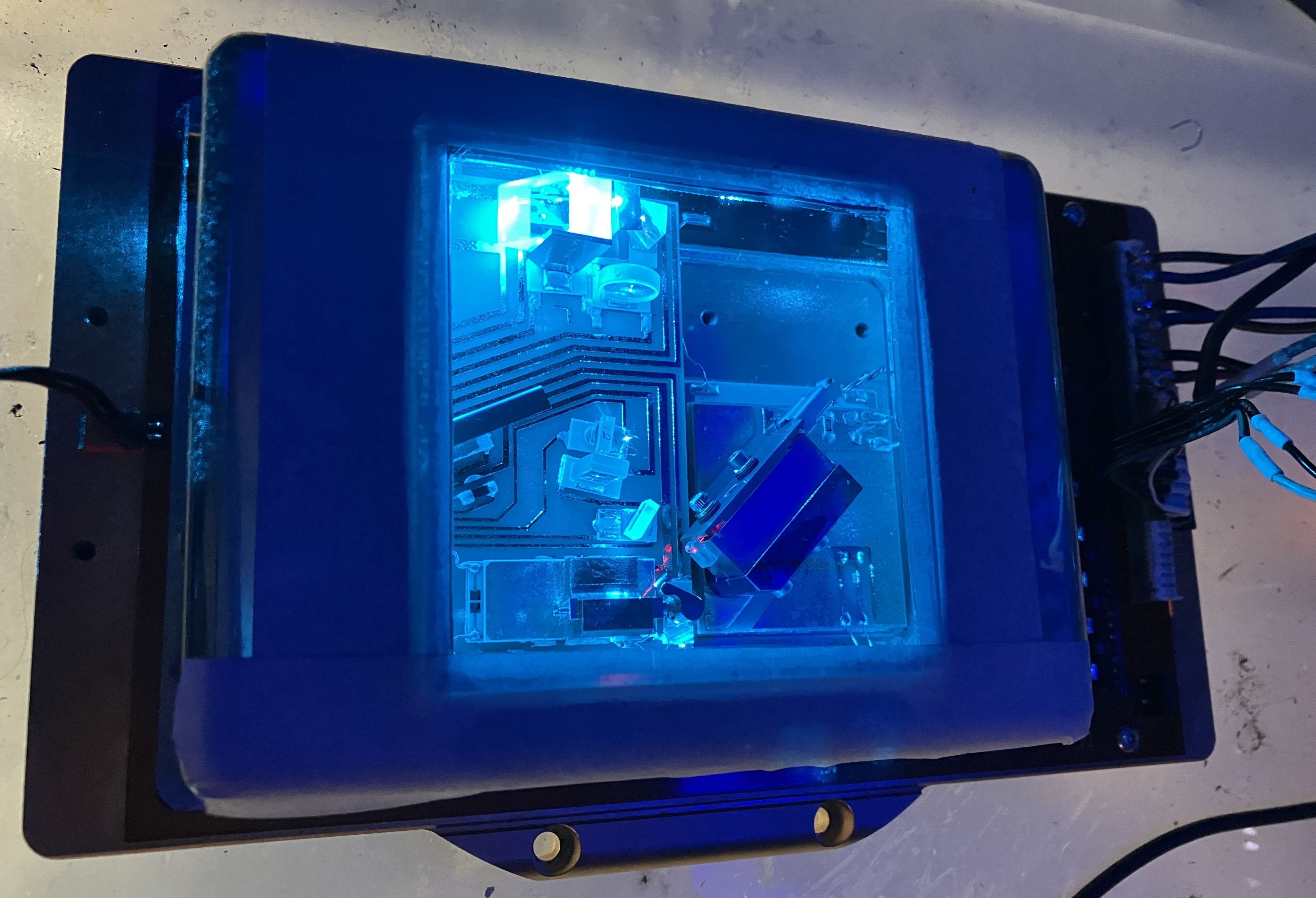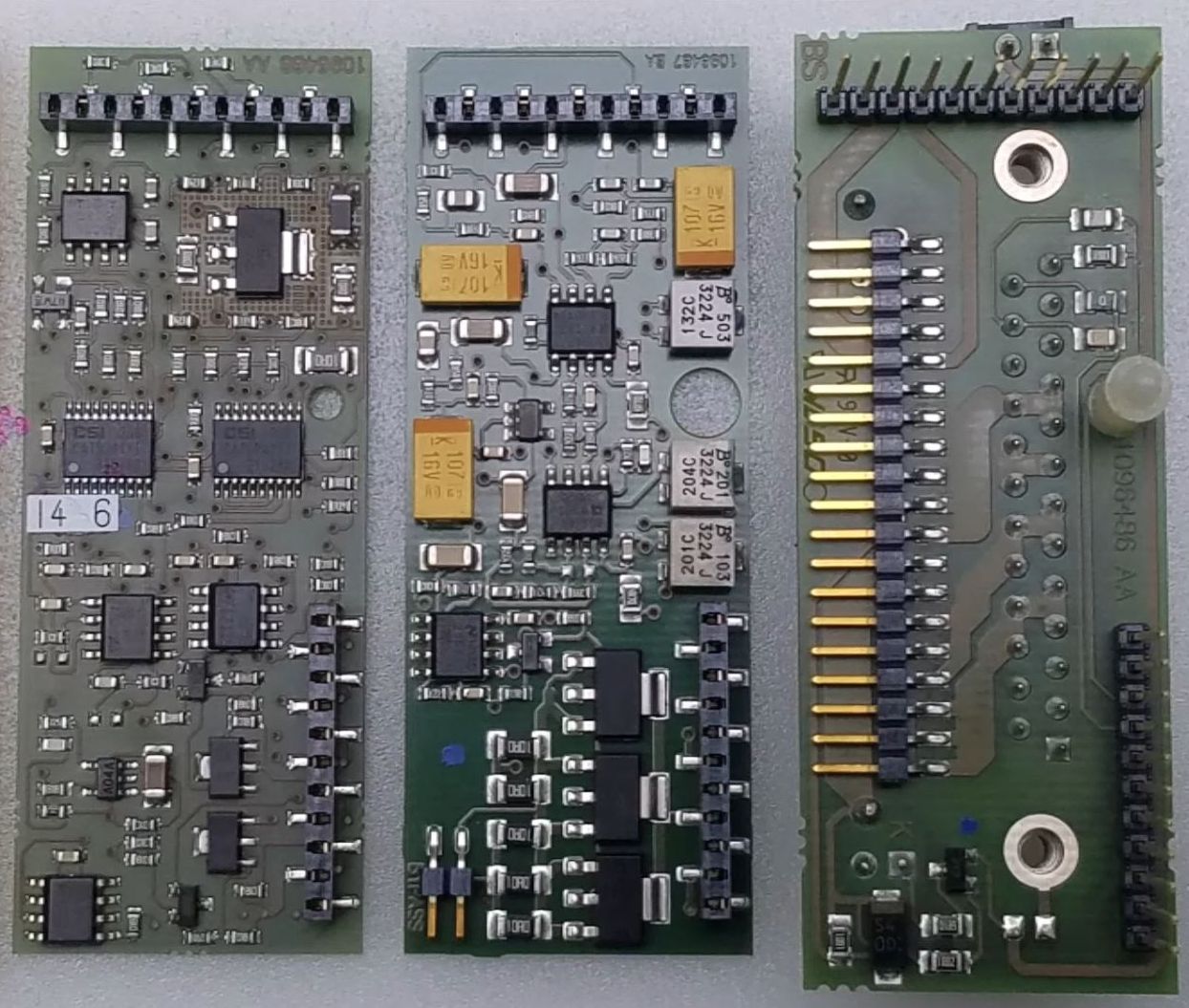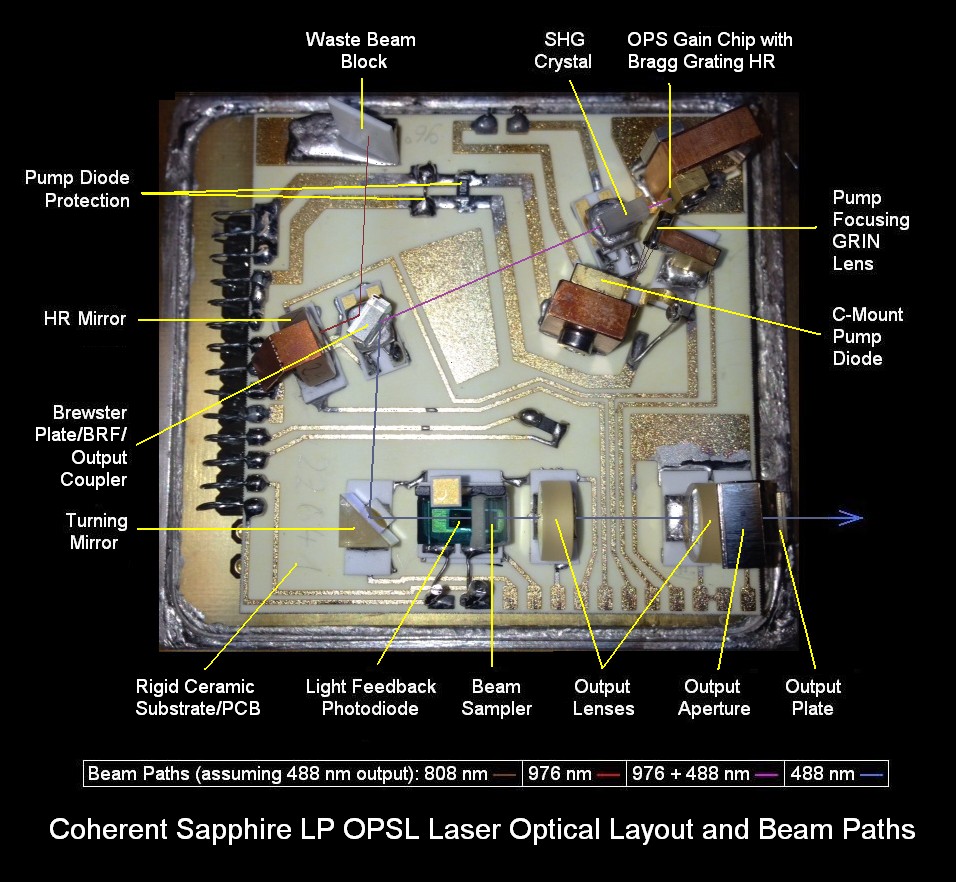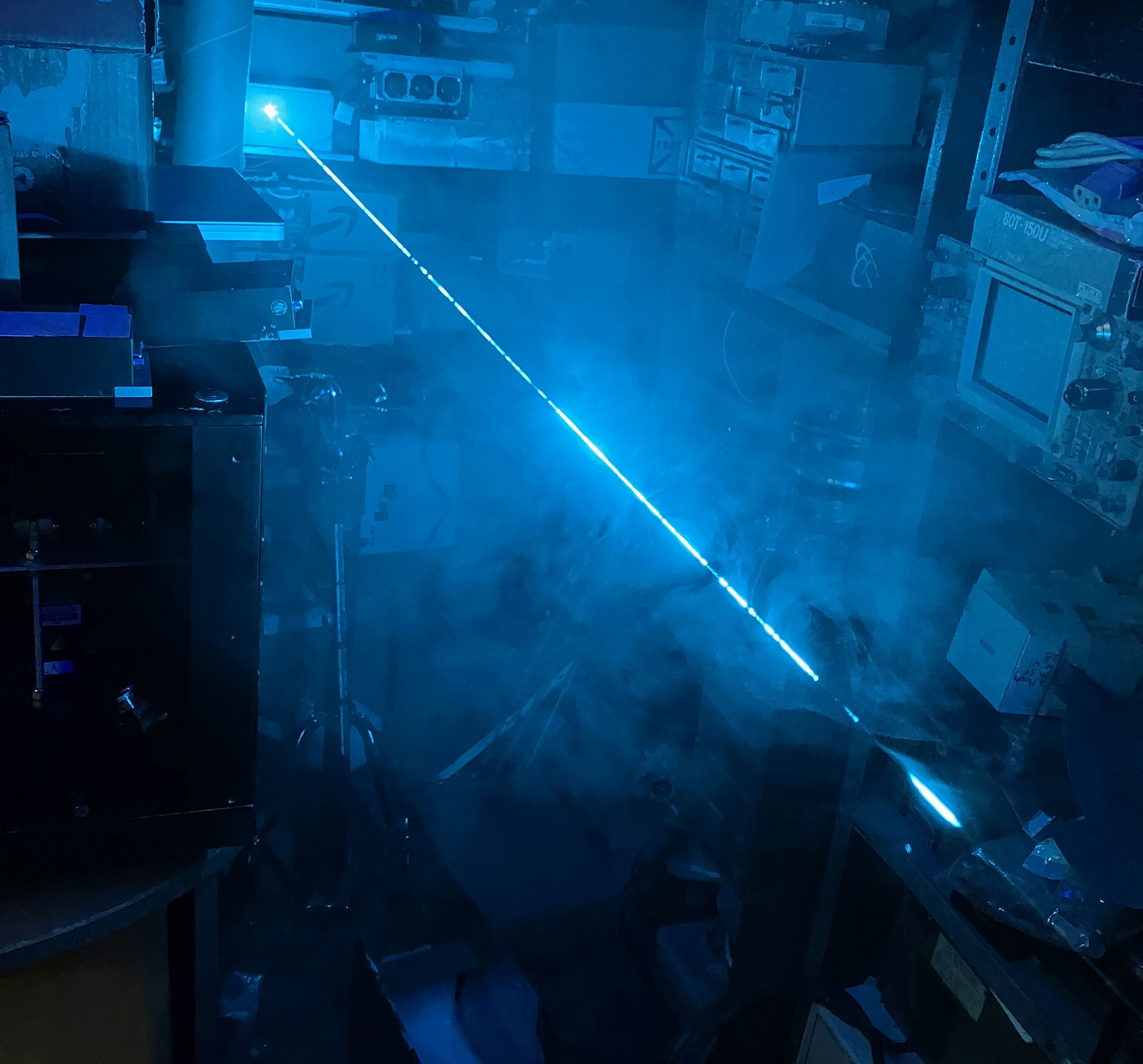The Coherent Sapphire 488-200 is a 488nm OPSL laser system capable of a maximum output power of 200 mW. Coherent originally patented OPSL technology and implemented it in their Sapphire and OBIS series of high-end lasers. These were originally intended to replace traditional Argon Ion lasers that were significantly larger and highly inefficient. Other manufacturers are now also using OPSL technology in their lasers, most notably OSRAM with their PL-530 miniature OPSL laser module. The PL-530 is an order of magnitude smaller than the Sapphire, but works in essentially the same way using miniaturized optics and an OPS chip. Notably, there are two versions of this laser system, the low power (LP) version produces around 20mW, and the high power (HP) version produces around 200mW. There are few differences between the two other than some design changes on the optical table PCB. This page covers both the 488-200 and the 488-20 (high and low power versions respectively) as their operation fundamentals are pretty much the same.

The laser head itself must be mounted to a heatsink, but use extra caution when securing it down as over torquing or "twisting" the base plate can cause the TEC contained within the laser head to become separated on some models. Coherent revised this design defect in the later models by placing the mounting holes on tabs at each side of the laser head, closer to the center instead of each corner. Inside the laser head is a hermetically sealed copper cover that is soldered over the ceramic optical table, which is essentially just a PCB with the optical components soldered to it. Below the sealed enclosure is the TEC that was mentioned earlier. Located directly behind the DB-25 connector (not sealed) is what is called the "Personality Module". This is a set of internal circuit boards responsible for several functions. Firstly, they break out the connections from the DB-25 socket to the ceramic PCB within the sealed enclosure, and to the TEC. The "Personality Module" also contains an NVRAM for the storage of the head serial number, operating parameters, and more. There are a few potentiometers and a position for a bypass jumper, but their functions are not clear. Since this digital module contains the information required to properly run the laser head, it can be used universally with any compatible Coherent power supply. While this does make sense to allow interchange and easy replacement of parts, it does prove to make it more challenging to adjust the head's operating parameters or run it with a third-party/DIY power supply. The following image is of the individual circuit boards that make up the "Personality Module". They are connected together in a stacked arrangement, installed on the connector behind the sealed enclosure, and secured to the back of the cover by the DB-25 socket.

These lasers are usually operated in conjunction with a dedicated Coherent OPSL driver system. This is also known as the Sapphire CDRH controller, which is just the Sapphire driver board inside of an enclosure with all of the physical controls, inputs, and outputs needed to drive the Sapphire leaser head. This Sapphire laser head in particular has had the "Personality Module" and original DB-25 connector removed and replaced by a direct connection to a custom driver system assembled by Zenodilodon (Patrick). He also milled out the top of the soldered on casing and replaced it with a glass viewing window.

The optical path for this OPSL laser system is as follows, strap yourself in! A c-mount pump laser diode produces a significant amount of 808nm laser light. The light passes through a FAC (fast axis correction) lens, and then a GRIN (gradient index) lens. The purpose of the GRIN lens is for beam correction and focusing, but it works a bit differently than other lenses. More information about GRIN lenses can be found at the bottom of this page. Light then hits the OPS (optically pumped semiconductor) chip, which converts the 808nm laser light into 976nm laser light. Afterwards, light passes through a LBO (lithium triborate) nonlinear crystal and then through a BRF (birefringent filter). The BRF filters the 976nm laser light and narrows its bandwidth, it also reflects 488nm laser light due to the dichroic coating on one side. The 976nm light is reflected back into the LBO crystal where SHG (second harmonic generation) takes place, resulting in the production of 488nm laser light. Both the BRF and LBO nonlinear crystal are mounted on small PTC heaters and are very sensitive to temperature. Proper operation of these components depends on precise temperature control. After 488nm light reflects off the BRF, a small portion of light is reflected off to a photodiode for monitoring. Light then passes through some beam forming lenses, through a collimating lens, and finally through the output window.

Please check out Zenodilodon's incredibly detailed video about the Coherent Sapphire 488nm laser. It even includes schematics for making your own driver system for these lasers! To learn more about OPSL laser systems and their components, visit the links below. Sam's laser FAQ also has useful information about repairing damaged Coherent Sapphire OPSL lasers.
